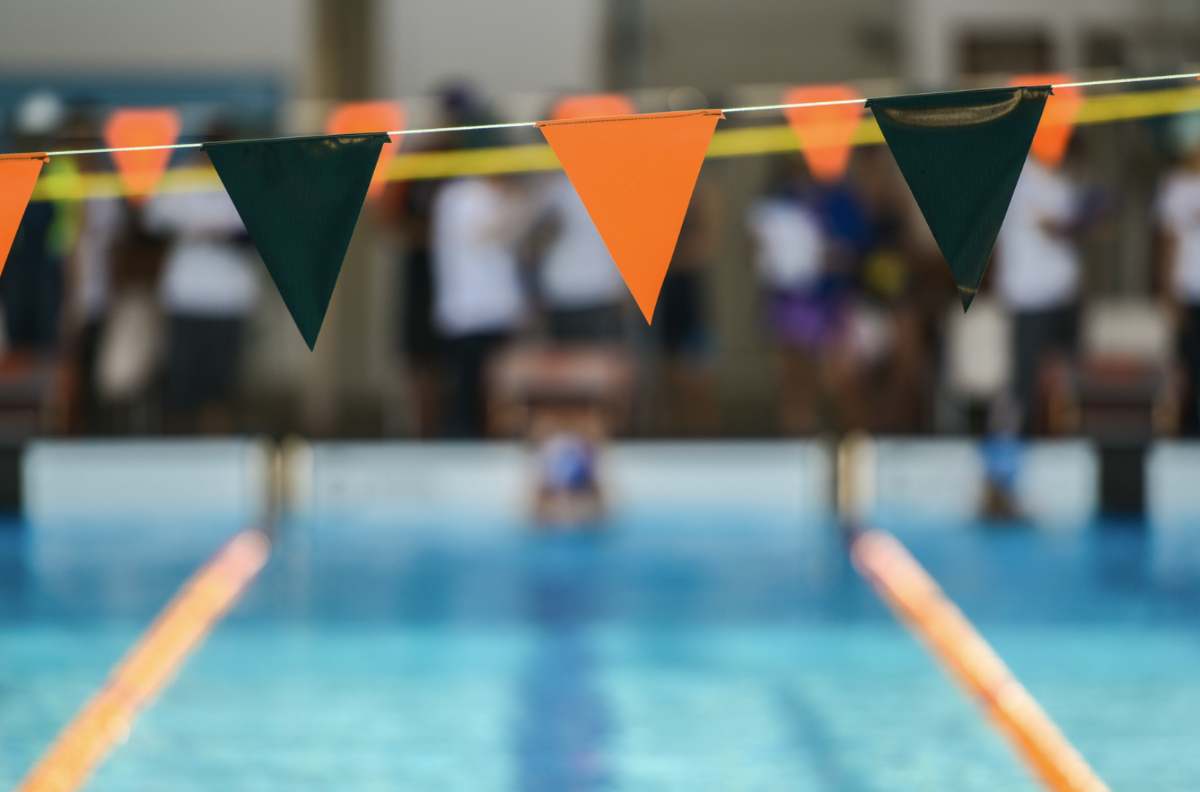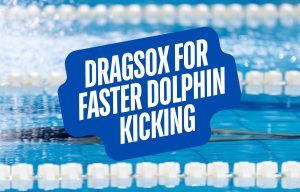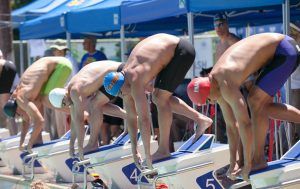Ready to take your underwaters to the next level? Here are three things swimmers can learn from one of the fastest swimmers and dolphin kickers on the planet.
At the 2024 NCAA Championships, Virigina’s Gretchen Walsh obliterated the competition, winning seven gold medals, including a US Open/American/NCAA record in the 50-yard freestyle.
In that race, Walsh’s superior underwaters were on full display, bursting out to an early lead off the start and breakout.
Just how fast is Walsh’s underwater kick?
SwimSwam was on the pool deck during a practice in 2022 when Walsh kicked a 100-yard backstroke (with full underwaters off each wall) in a staggering 54-55 seconds.
In an interview with the Social Kick Podcast, she was (somewhat jokingly) asked if she could underwater dolphin kick 50 yards faster than swimming it freestyle.
After some chuckles, you can see the seriousness in her face when she says, “I think it would be faster than my 50 free [swim] though.”
Walsh notes that she has always had strong underwaters, but in recent years, improvement has come from performing a consistent number of kicks off each wall, focusing on the upkick, and getting stronger.
Here is a quick overview of these three points and what swimmers can do in their own training to emulate one of the fastest swimmers on the planet.
Let’s dive in!
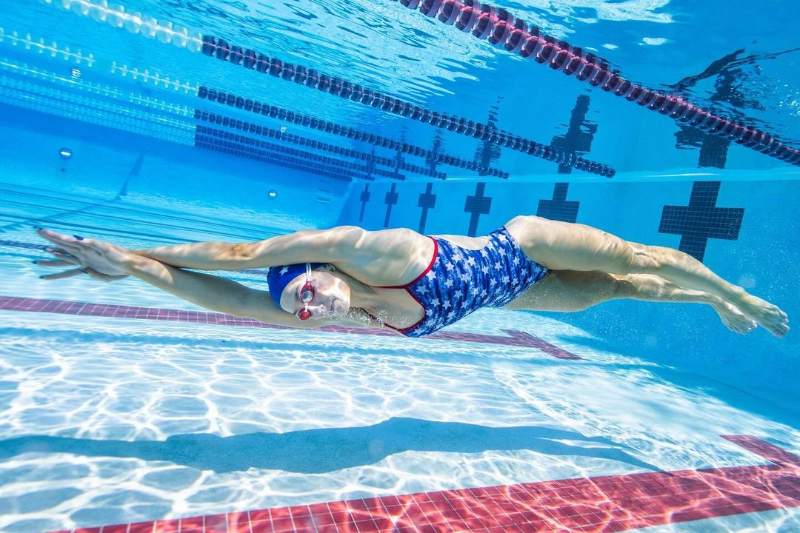
1. Count your kicks.
Underwater dolphin kicking is one of the skills that gets mythologized quite a bit because swimmers who are good at it make it look extremely easy.
But that ease is built over the days, weeks, months, and years of swim training in the pool, stockpiling the dolphin kicks and making long underwaters routine.
Each day at practice, Walsh is pushing off each wall and doing twelve dolphin kicks before exploding to the surface.
There’s no “practice” underwaters and “racing” underwaters.
What she does in training is what she does in competition and vice versa.
“I definitely train to do 12 kicks per wall,” she told the Social Kick Podcast.
There are two key benefits of approaching improving underwaters this way:
1. Stack the number of kicks performed over the course of a season.
More underwater kicking gives you more opportunities to improve, more chances to test the number of kicks off the wall, and more possibilities for technical improvements.
2. Builds pulmonary strength.
Longer underwaters requires efficient respiration and strong pulmonary muscles.
Honing these in training help you to manage your breath as you get fatigued during a race.
Elite underwaters start in practice by adding just one kick per wall.
Don’t sleep on the power of this “boring” aspect of improving your dolphin kick.
Olympian and NCAA champion Tom Shields included 15m underwaters as part of every lap of his warm-up. Every lap. Every day.
Ryan Murphy, Olympic gold medalist and former 100m world record holder, does 6-8 dolphin kicks off every wall in practice, no matter if it’s warm-up or warm-down.
“I am constantly counting in practice,” says Walsh. “Strokes, kicks, everything.”
Make great underwaters routine and not something you only focus on from time to time or when you have a swim meet on the weekend.
2. Improve the upkick.
Most swimmers sleep on the upkick phase of the dolphin kick, which is too bad, as a fast and powerful upkick is a marker of a high-velocity dolphin kick.
When a group of competitive swimmers were filmed with high-velocity cameras while performing underwater dolphin kick, researchers found that those who kicked fastest had faster “toe speed.”
In other words, the fast kickers kicked fast in both directions.
Swimmers typically use the upkick as a pure recovery phase to set up a vicious downkick. Elite kickers use both phases as much as possible.
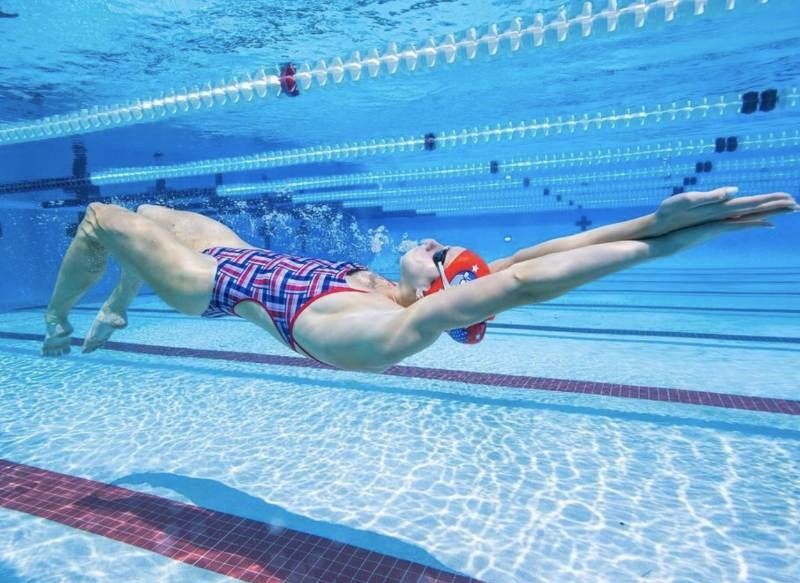
Walsh credits a focus on the upkick phase for helping her improve during the 2023 collegiate season, when she swam to six gold and a silver medal at NCAA’s.
“This year, we have been working on the up kick and utilizing both directions of the kick,” she said.
Improving the upkick can be done with some more mindful kicking, but there are also two kicking drills to promote equally strong and fast kicking in both directions:
Vertical kicking
Vertical kicking is one of the essentials for developing a stronger kick.
Going vertical forces you to kick from the core, balances out your kick (without it you’ll sink), helps you work on kicking tempo, and when adding resistance in the form of DragSox or raising your arms out of the water, develops serious kicking power.
Vertical kicking was also one of the tools Michael Phelps used to power up his underwaters.
“Some of the most effective work in the pool comes with vertical kicking,” Phelps said back in 2008 in the run-up to the Beijing Games.
Fish kicking
Fish kicks, or kicking on your side, is an excellent way to “feel” the up-kick phase of the dolphin kick.
Kicking on your side—especially with a set of swim fins to increase the amount of water the feet are pushing—helps encourage a more balanced kick.
3. Get stronger.
Walsh notes that some of the speed gains she made during her collegiate career were the result of getting stronger in the gym.
“My kicks have gotten a lot more powerful in the past couple of years,” she notes. In an interview in 2024, she also added that she’s been “getting a lot stronger in the weight room.”
There are a lot of different dryland exercises swimmers can do to get stronger dolphin kicks.
Some of my favorites include:
- Kettlebell swings
- Power cleans
- Roll outs
- Deadlifts
- Squats
Ultimately, strength training for faster underwaters help improve postural alignment, emphasize a strong and stable torso, and build overall strength in the muscle groups that promote power in the dolphin kick.
Wrapping Things Up
Faster underwaters are a vital aspect of fast swimming.
Especially for you swimmers who compete in short course yards pools, where up to 15m of each lap can be performed underwater.
Make underwater kicking a part of your daily training, count your kicks off each wall, work that upkick, and focus on building strength outside of the pool, too.
While you may not kick as fast as Gretchen Walsh, you can use some of the same strategies she uses to level up your own underwaters and turn out faster times on race day.
The Ultimate Guide for a Faster Underwater Dolphin Kick
Want help leveling up your underwater dolphin kick? The Dolphin Kick Manual is the ultimate resource for helping swimmers and swim coaches develop a world-class underwater dolphin kick.

The Dolphin Kick Manual is a beastly 240+ pages of actionable insights and research into elite dolphin kicking technique and performance. It details everything from mastering undulation to vortex recapturing to structuring a dryland program for dolphin kicking success.
It combines evidence-based insights with a collection of 20 ready-to-go sets and a 6-week Action Plan to help swimmers set a course for dolphin kicking success.
Train smarter and kick faster.

